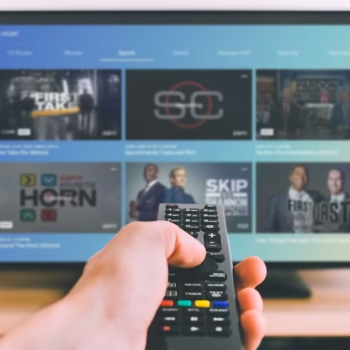Pet tracking isn’t what it used to be. Forget just collar tags and hoping for the best. Today’s options give real peace of mind. They use modern GPS, Bluetooth, and cell signals to keep your dog or cat safe. These best pet trackers rely on solid tech you can count on.
TL;DR
Here’s what you need to know about the best pet trackers:
Top 3 Quick Comparison:
- Fi Smart Dog Collar Series 3 – 3-month battery, unlimited range
- Tractive LTE GPS Tracker – 7-day battery, global coverage
- Tile Pro – 1-year battery, 400ft range
Key Takeaways:
- Best Overall: Fi Smart Dog Collar Series 3 (durability + battery life)
- Best Budget: Tile Pro (no subscription required)
- Best for Rural Areas: Tractive LTE (strongest cellular coverage)
Why Pet Trackers Are Non-Negotiable in 2025
Sobering stats: American Humane Association says over 10 million dogs and cats go missing yearly in the US. That’s roughly one pet every three seconds.
Only 23% of lost dogs without ID ever come home. With proper ID, that number rises to about half. But microchips alone fall short now.
- Why microchips aren’t enough: Someone must find your pet and get them scanned. They’re passive. No real-time location. No escape alerts. No way to track them before they get too far.
- Costs add up fast: Searching for a lost pet averages over $2,000. Think time off work, flyers, pet detectives, plus possible vet bills if they’re hurt.
- Emotional toll is heavy: Ask any owner who’s been through it. Stress, sleepless nights, constant worry leave deep scars on families.
A modern solution changes this. A GPS pet tracker offers proactive monitoring, not just hoping. It’s how today’s best pet trackers work.
How Pet Trackers Work: GPS, Bluetooth & Cellular Explained
Understanding tracker technology helps you choose the right device for your specific needs. Each system has distinct advantages and limitations.
GPS Trackers (Real-Time Location, Geofencing)
GPS trackers connect to satellite networks for pinpoint location accuracy. Most modern devices achieve precision within 10-30 feet under ideal conditions.
- Real-time pet tracking updates every 15-60 seconds, depending on your settings. Battery life decreases with more frequent updates, but you’ll always know exactly where your pet is located.
- Geofencing for pets creates virtual boundaries around your property. Step outside the designated area? Instant notifications hit your phone. Perfect for escape artists or newly adopted pets still learning their boundaries.
Bluetooth Trackers (Proximity Alerts, Low Energy)
Bluetooth pet tracker devices excel at short-range monitoring. They’re lightweight, affordable, and offer exceptional battery life. Range typically extends 100-400 feet in open areas.
These trackers work best for indoor cats or dogs who stay close to home. They also leverage community networks – if another user walks past your lost pet, you’ll receive location updates.
Hybrid Systems (Cellular + Radio Backup)
Premium trackers combine multiple technologies for redundant coverage. Cellular provides wide-range tracking while radio frequencies offer backup in areas with poor cell service.
Long-range pet tracker systems can monitor pets across entire continents. Some work internationally, making them ideal for frequent travelers or military families.
Key Tech Terms: Geofencing, RSSI Signal, Multi-Network Coverage
- Geofencing: Virtual perimeters that trigger alerts when crossed
- RSSI Signal: Received Signal Strength Indicator – measures connection quality
- Multi-Network Coverage: Devices that switch between cellular carriers automatically for optimal signal strength
Top 7 Pet Trackers Compared
1. Fi Smart Dog Collar Series 3 (Best Overall)
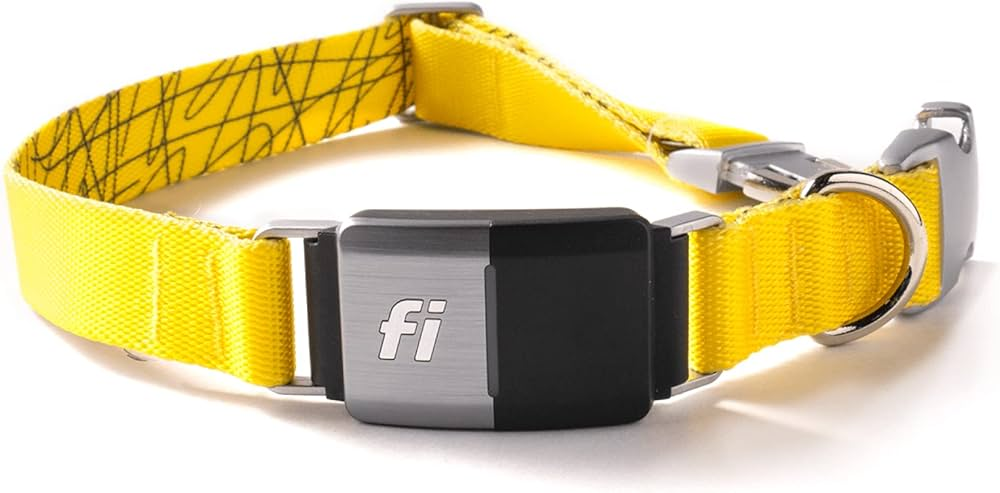
The Fi collar revolutionized dog tracker technology by integrating GPS into a stylish, durable collar design. No separate attachments. No bulky modules.
Pros:
- 3-month battery life with normal use
- Built-in collar eliminates separate attachments
- Excellent app interface with detailed activity tracking
- Strong community features for social pet parents
Cons:
- Limited to dogs (collar design unsuitable for cats)
- Higher upfront cost than basic trackers
- Requires monthly subscription for GPS features
Main specs:
- Battery: Up to 3 months
- Range: Unlimited (cellular network dependent)
- Key Feature: Integrated collar design with no separate tracker module
2. Tractive LTE GPS Tracker (Best Real-Time)
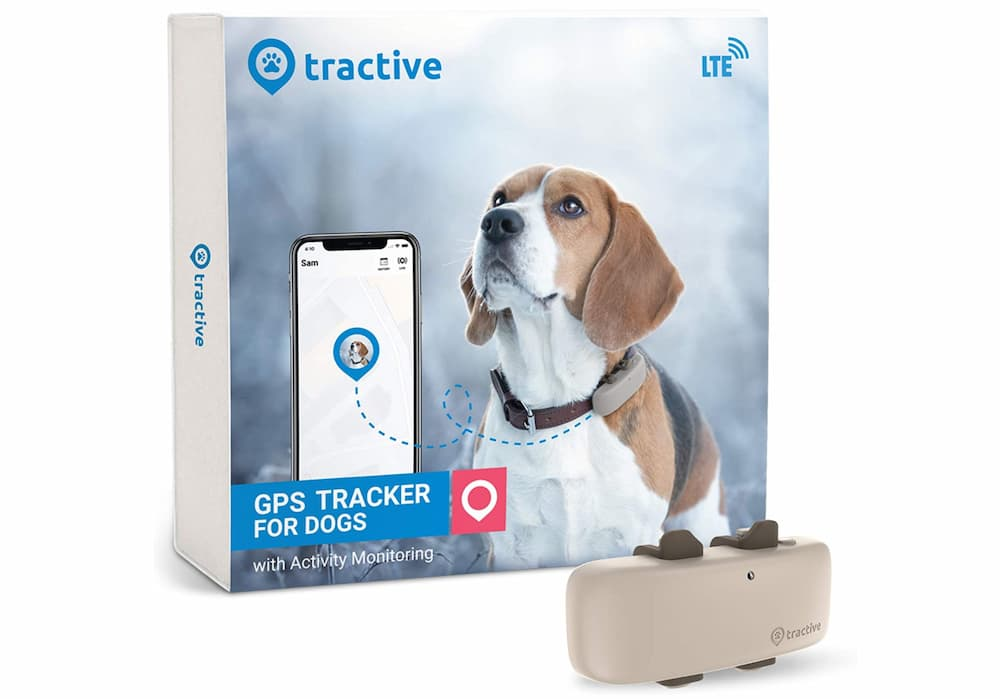
Tractive offers professional-grade tracking with global coverage. Their LTE network provides reliable connectivity even in remote locations.
Pros:
- Works in 175+ countries
- 1-3 minute location updates
- Excellent customer support
- Heat map feature shows favorite locations
Cons:
- Bulkier than some alternatives
- Subscription required for all GPS features
- Battery life varies significantly with usage
Main specs:
- Battery: 5-7 days typical use
- Range: Global coverage
- Key Feature: Fastest location updates available
3. Whistle Go Explore (Best Health Monitoring)
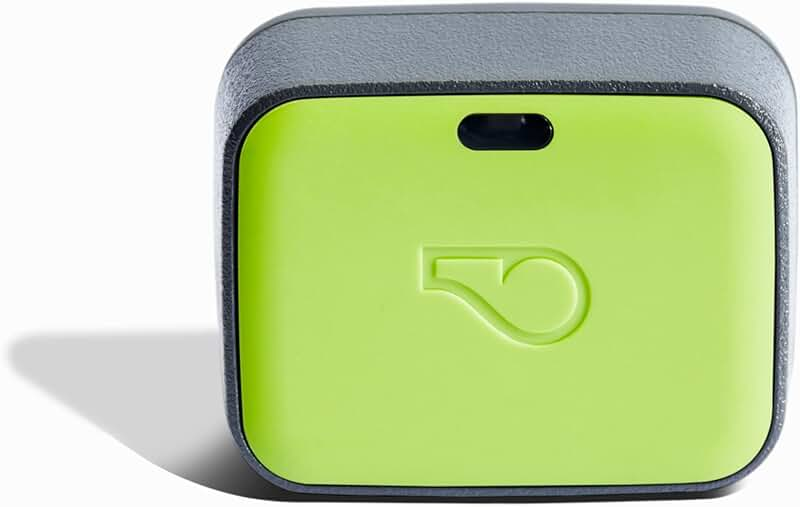
Whistle combines location tracking with comprehensive health monitoring. It’s like having a veterinary assistant on your pet’s collar.
Pros:
- Pet GPS with health monitoring including activity levels
- Vet-approved health insights
- Excellent app with detailed analytics
- Solid build quality
Cons:
- Expensive ongoing subscription costs
- Health features may overwhelm casual users
- Shorter battery life than Fi collar
Main specs:
- Battery: 20 days with moderate use
- Range: Nationwide coverage
- Key Feature: Comprehensive health and wellness monitoring
4. Tile Pro (Best Budget Bluetooth)
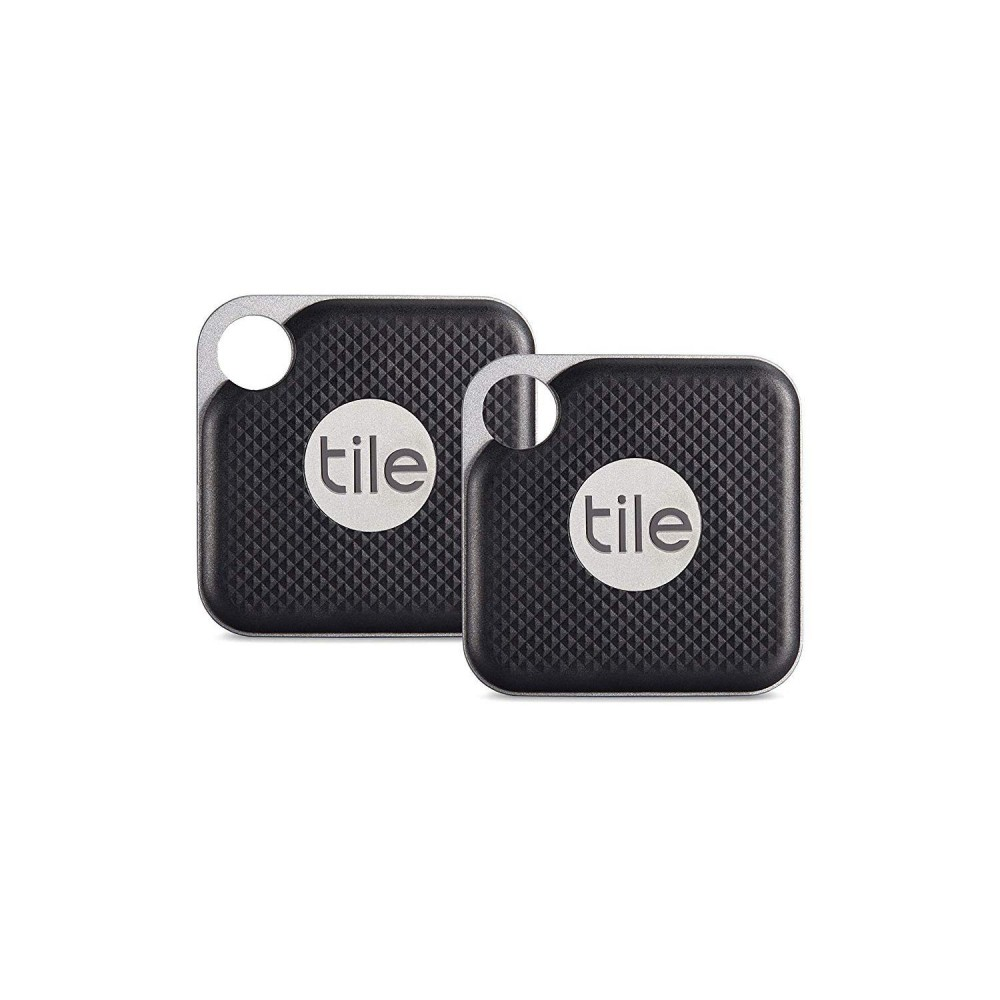
Tile Pro proves that effective pet tracking doesn’t require breaking the bank. This subscription-free pet tracker offers solid performance for budget-conscious owners.
Pros:
- No monthly fees ever
- 1-year replaceable battery
- Loud 120dB alarm for finding nearby pets
- Works with massive Tile community network
Cons:
- Limited to Bluetooth range (400 feet maximum)
- Relies on other Tile users for wide-area tracking
- No GPS functionality
Main specs:
- Battery: 1 year (user replaceable)
- Range: 400 feet direct, unlimited via community
- Key Feature: No monthly fee pet tracker with community support
5. Pawfit 3 (Best No-Subscription Option)
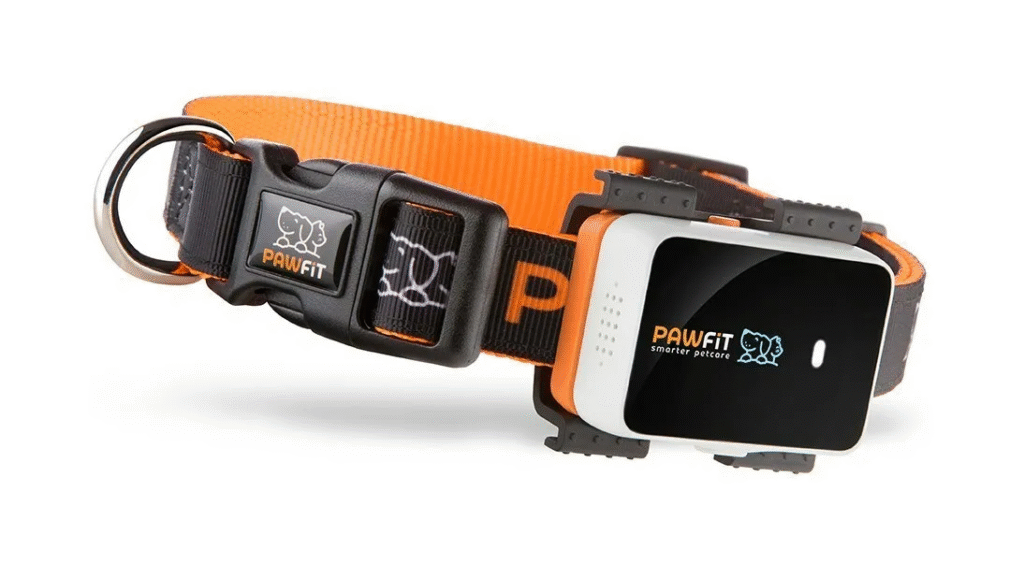
Pawfit 3 eliminates monthly fees while providing GPS tracking through innovative technology. Perfect for owners wanting GPS without ongoing costs.
Pros:
- True GPS tracking without subscriptions
- Pet tracker for large rural areas with strong signal
- Multiple pet support on single account
- Decent battery life for GPS device
Cons:
- Higher upfront device cost
- Limited app features compared to subscription services
- Customer support can be slow
Main specs:
- Battery: 7-10 days
- Range: GPS coverage anywhere with cell signal
- Key Feature: Best pet tracker without subscription offering GPS functionality
6. Link My Pet (Best for Cats)
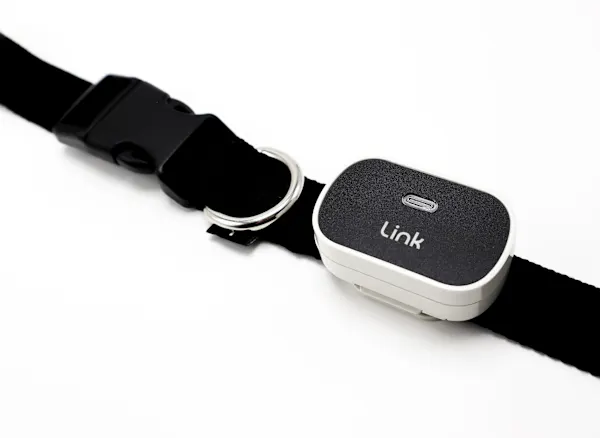
Designed specifically for feline friends, Link My Pet creates the lightweight cat tracker collar that won’t bother even sensitive cats.
Pros:
- Ultra-light design (under 1 ounce)
- Cat tracker optimized for feline behavior
- Good battery life relative to size
- Affordable monthly subscription
Cons:
- Limited to cats and small dogs under 15 pounds
- Basic app functionality
- Shorter range than larger trackers
Main specs:
- Battery: 2-3 weeks
- Range: Cellular network dependent
- Key Feature: Feather-light design perfect for cats
7. Jiobit Smart Tag (Best for Small Pets)
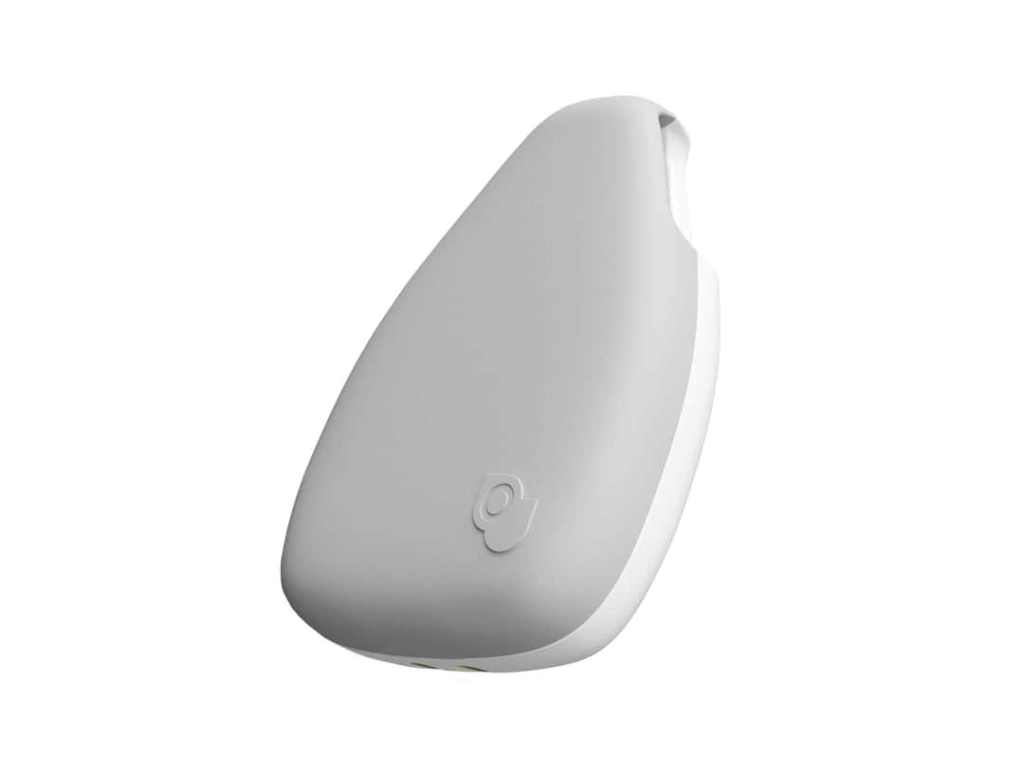
Jiobit specializes in tracking tiny animals that can’t handle bulky devices. Their smart tag works for rabbits, ferrets, and other small companions.
Pros:
- One of the smallest GPS trackers available
- Works for pets under 5 pounds
- Good app with family sharing features
- Reliable tracking performance
Cons:
- Very expensive for the size
- Short battery life due to compact design
- Limited durability compared to larger trackers
Main specs:
- Battery: 7-10 days
- Range: Nationwide coverage
- Key Feature: Smallest form factor available for tiny pets
Key Features That Make or Break a Pet Tracker
Battery Life: Short-Term vs. Long-Term Solutions
Battery performance separates good trackers from great ones. Dog tracker with long battery life devices reduce maintenance stress and ensure consistent monitoring.
Daily charging becomes tedious quickly. Weekly charging is manageable. Monthly charging is ideal for most pet parents.
Factors affecting battery life:
- Update frequency settings
- GPS vs. Bluetooth usage
- Temperature extremes
- Age of the device
Accuracy & Range: Urban vs. Rural Performance
Urban environments offer excellent cellular coverage but present GPS challenges. Tall buildings create “urban canyons” that interfere with satellite signals.
Rural areas provide clear GPS reception but may lack cellular towers. Choose trackers with multiple network support for consistent coverage.
Waterproof pet tracker protection becomes essential for outdoor adventures. Look for IPX7 rating minimum for swimming and heavy rain protection.
Durability: Waterproof Rating & Shock Resistance
Active pets need rugged devices. Your tracker should survive:
- Swimming and water play
- Rough play with other animals
- Accidental drops and impacts
- Extreme weather conditions
Premium trackers offer durability testing. Budget options may require protective cases for active pets.
App Experience: Maps, Notifications & History
A tracker is only as good as its app interface. Essential features include:
- Clear, accurate mapping
- Instant push notifications
- Location history and patterns
- Multiple pet support
- Family member access
Poor apps frustrate users and reduce the tracker’s effectiveness. Read recent app store reviews before purchasing.
Species-Specific Tracking Needs
Trackers for Escape-Artist Dogs (Large Breeds/Houdinis)
Large, athletic dogs require robust tracking solutions. Great Danes, German Shepherds, and other powerful breeds can destroy flimsy trackers.
Pet GPS collar integration works best for large dogs. The collar distributes weight evenly and can’t be easily removed or damaged during play.
Escape artists need instant notifications. Set geofencing boundaries tight around your property for immediate alerts.
Ultra-Light Cat Trackers (Indoor-Outdoor Safety)
Cats are notoriously picky about collar accessories. Heavy trackers get removed, hidden, or cause stress behaviors.
Indoor pet tracking helps monitor cats who slip outside unexpectedly. Even indoor-only cats benefit from backup tracking in case of escape.
Breakaway collars present challenges for tracker attachment. Some manufacturers offer special breakaway-compatible mounting systems.
Small Pet Solutions (Rabbits, Ferrets & Birds)
Exotic pets have unique tracking needs. Traditional dog trackers are too heavy for rabbits under 3 pounds.
Pet activity monitor features help track unusual behavior patterns that might indicate health issues in small animals.
Consider harness-based systems for pets who can’t wear traditional collars safely.
Ethical & Privacy Concerns
- Data Security: Location data is incredibly sensitive. Research which companies store your pet’s movement patterns and who has access to that information.
- Safe Usage: Collar injuries can occur with any tracking device. Check collar fit weekly – you should fit two fingers between collar and neck comfortably.
- Pet safety device attachments should never restrict breathing, eating, or natural movement. Remove trackers during unsupervised play with other animals.
FAQ: Your Pet Tracker Questions Answered
How accurate are GPS pet trackers in dense forests?
GPS accuracy decreases significantly under heavy tree cover. Expect 50-100 foot accuracy in dense forests compared to 10-30 feet in open areas. Hybrid trackers with radio backup perform better in challenging environments.
Can trackers monitor my pet’s health or activity levels?
Today’s trackers often include motion sensors. These monitor activity levels. Devices like Whistle Go give you details on health: sleep patterns, exercise, and behavior changes. Spotting shifts in behavior can help flag potential health problems early.
What’s the average battery life for cellular trackers?
These trackers usually last 5 to 20 days per charge. How long depends on how you use them. Frequent location pings, very hot or cold weather, and weak cell signals drain battery a lot faster. To help, you can often change how often the device reports location. This helps balance knowing where your pet is with making the battery last longer.
Do all GPS trackers require a monthly subscription?
Not all GPS trackers require monthly fees. Options like Pawfit 3 and Tile Pro work without subscriptions. However, trackers with fees usually give you better coverage, more features, and superior customer support. When comparing choices, think about total costs over two or three years.
Are Bluetooth trackers useless if my pet is miles away?
Bluetooth trackers don’t work directly over miles. Their range is short, usually 100 to 400 feet. But they use a community network. In busy areas, other people’s phones can pick up the signal. If your dog or cat wanders off, nearby phones help find its location. That’s how these tags offer coverage beyond their own limited range.
How do I waterproof a pet tracker?
Most quality trackers include waterproof ratings (IPX4-IPX8). For additional protection, consider silicone cases or protective sleeves. Ensure charging ports remain accessible while maintaining water resistance.
Can I use one tracker for multiple pets?
Individual trackers work best for accurate monitoring. Some services offer family plans with discounted rates for multiple pets. Sharing trackers between pets eliminates individual activity tracking and creates gaps in coverage.
What’s the lightest tracker for cats under 8 lbs?
Link My Pet and Jiobit offer the lightest GPS options under 1 ounce. For ultra-light solutions, consider Bluetooth trackers like Tile Mate (0.45 ounces) or Apple AirTags (0.39 ounces) with breakaway collar attachments.





